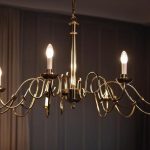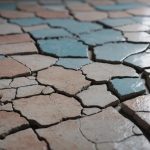Ever wondered if it’s safe to leave your lights on all night or even for several days? The safety of keeping a light bulb on for an extended period can vary greatly depending on the type of bulb you’re using.
LED lights, for instance, can safely illuminate your space for several days or even up to two weeks without posing any risks.
On the other hand, incandescent bulbs should be turned off when not in use, as they generate significant heat and can become a fire hazard if left on too long.
Let’s break down the key takeaways:
- LED Lights: Safe to leave on for days or even weeks, cost-efficient, and low heat generation.
- Incandescent Bulbs: Should be switched off when not in use due to high heat output and fire risk.
- Overnight Lighting: Safe with low wattage LED bulbs, which are also cost-efficient.
- Fire Risk: Increased with lights that generate too much heat over prolonged periods.
- Quality Matters: Well-manufactured lights can stay on longer safely.
Understanding these differences can help you make informed choices about your lighting needs, ensuring both safety and efficiency in your home. Ready to dive deeper into the specifics of each bulb type and their safe usage times? Let’s explore.
Contents
Can LED Lights be Left On 24/7?
Answer: Yes, LED lights can be left on 24/7 safely. They are designed to be energy-efficient and emit very low heat, which significantly reduces the risk of fire compared to incandescent bulbs. However, the quality of the LED lights matters greatly. Ensure you purchase well-manufactured, high-quality LED lights from reputable brands to avoid potential hazards.
Key Points:
- Energy Efficiency: LED lights consume significantly less power than traditional bulbs, making them cost-effective for continuous use.
- Heat Emission: LEDs emit minimal heat, reducing the risk of fire even when left on for extended periods.
- Longevity: High-quality LED lights have a long lifespan, often exceeding 25,000 hours, which equates to nearly three years of continuous use.
- Safety: LEDs are built with safety in mind, featuring robust materials that handle long-term usage well.
Practical Tips:
- Choose Quality: Opt for LED lights from trusted manufacturers to ensure safety and longevity.
- Check Specifications: Review the product specifications for heat output and lifespan.
- Use Appropriately: While safe for 24/7 use, consider switching off LEDs when not needed to save energy further.

How Much More Frequently Do LED Lights Need to Be Replaced Than Incandescent?
LED lights have a substantially longer lifespan than incandescent bulbs. On average, an LED light can last between 25,000 to 50,000 hours, while an incandescent light typically lasts around 1,000 hours.
Average Lifespan Comparison
| Type of Light | Average Lifespan (Hours) | Replacement Frequency (Compared to Incandescent) |
| LED Light | 25,000 – 50,000 | 1 LED for every 25-50 Incandescents |
| Incandescent Light | 1,000 | 25-50 Incandescents for 1 LED |
Factors Influencing LED Lifespan
- Quality of Materials: High-quality LEDs from reputable brands tend to last longer.
- Operating Conditions: Proper ventilation and adherence to manufacturer guidelines can extend LED lifespan.
Comparative Analysis
- Energy Efficiency: LED lights not only last longer but also consume significantly less energy, making them a more sustainable and economical choice in the long run.
- Technological Advancements: Ongoing improvements in LED technology are expected to enhance their durability and efficiency further.
How Long Can A Light Bulb Stay on Safely?
The safe operating time of a light bulb depends on several critical factors:
- LED Operating Temperature Range: LEDs function optimally within specific temperature ranges. High temperatures can degrade the bulb’s components, reducing its lifespan. Ensure adequate ventilation and avoid enclosed fixtures that trap heat.
- Design of the Lighting System: Proper design ensures heat dissipation and prevents overheating. High-quality lighting systems with efficient heat sinks can significantly enhance the lifespan of LEDs.
- Maintenance of the Lighting System: Regular maintenance, such as cleaning dust from fixtures and ensuring electrical connections are intact, can prevent overheating and other issues that may shorten the bulb’s lifespan.
- Environmental Conditions: Extreme heat, humidity, and other harsh conditions can negatively affect light bulbs. For instance, in highly humid environments, moisture can penetrate the bulb, leading to corrosion and failure.
- Quality and Type of LED Used: Higher quality LEDs, often from reputable manufacturers, tend to last longer. They are built to withstand more cycles of turning on and off and have better thermal management.
- Power Supply and Voltage Fluctuations: Stable power supply is crucial. Voltage spikes and fluctuations can damage light bulbs, especially LEDs. Using surge protectors can help mitigate this risk.
- Usage Patterns and Frequency of Turning On/Off: Constant switching on and off can reduce the lifespan of light bulbs. LEDs are less susceptible to this compared to incandescent bulbs, but it can still be a factor.
Is it Safe to Leave LED Lights on 24/7?
Yes, it is generally safe to leave LED lights on 24/7, but there are potential safety concerns to be aware of, and proper mitigation strategies should be implemented.
Potential Safety Concerns and Mitigation Strategies
| Potential Concern | Explanation | Mitigation Strategy |
| Overheating | Although LED lights emit less heat than incandescent bulbs, they can still overheat if used in enclosed fixtures without adequate ventilation. | Ensure adequate ventilation by using open fixtures and avoiding tight, enclosed spaces for LED bulbs. |
| Electrical Hazards | Poorly manufactured or damaged LED lights can pose risks such as short circuits or fire hazards. | Purchase LEDs from reputable manufacturers and routinely inspect them for damage or wear. Replace any damaged lights immediately. |
| Energy Consumption | Leaving LED lights on unnecessarily can lead to higher energy bills, despite their efficiency. | Use timers or smart home systems to turn off lights when not needed, conserving energy and extending the lifespan of the bulbs. |
| Light Pollution | Continuous operation of LED lights can contribute to light pollution, affecting sleep patterns and the environment. | Use dimmers or motion sensors to reduce light intensity and limit usage during late hours. |
How Long Can You Leave LED Strip Light On?
The short answer is that it is generally safe to leave LED strip lights on for extended periods. Due to their low heat production and energy efficiency, they pose minimal risk compared to traditional lighting options. However, constant use can lead to potential issues such as overheating and reduced lifespan.
Here’s a detailed look at the key factors:
| Aspect | Details | Recommendations |
| Heat Generation | LEDs produce significantly less heat than incandescent bulbs, making them safer for continuous use. This low heat output minimizes the risk of fire or burns. | Ensure proper ventilation and avoid placing the strips near flammable materials. |
| Lifespan | LED strip lights can last between 24,000 to 50,000 hours depending on the quality and usage. However, continuous operation might reduce their overall lifespan. | To maximize lifespan, use timers or smart controls to limit operation when not needed. |
| Efficiency | While LED strips are energy-efficient, leaving them on continuously can lead to decreased efficiency over time. This might result in higher electricity bills and more frequent replacements. | Optimize usage patterns to enhance both efficiency and cost-effectiveness. |
| Environmental Impact | Leaving LEDs on unnecessarily can contribute to energy wastage, despite their efficiency. This has a broader environmental impact, increasing the carbon footprint. | Utilize motion sensors or dimmers to reduce unnecessary usage and conserve energy. |
Conclusion
Leaving a light bulb on for an extended period can be a concern for safety and efficiency. LED lights shine brightly as the safest option, capable of running continuously for days, weeks, or even longer without significant risk. Their low heat emission and energy efficiency make them ideal for long-term use. In contrast, incandescent bulbs, with their high heat output, pose a fire hazard if left on too long and should be turned off when not needed.
LED lights not only conserve energy but also boast a lifespan of 25,000 to 50,000 hours, vastly outlasting the mere 1,000-hour lifespan of incandescent bulbs. High-quality LEDs from reputable brands ensure better performance and safety, making them a smart investment. Proper design and maintenance of lighting systems further enhance LED longevity by ensuring optimal operating temperatures and preventing overheating.
Extreme environmental conditions and power fluctuations can impact all bulbs, but LEDs handle these challenges better. Surge protectors and avoiding frequent on/off cycles can prolong their life.





